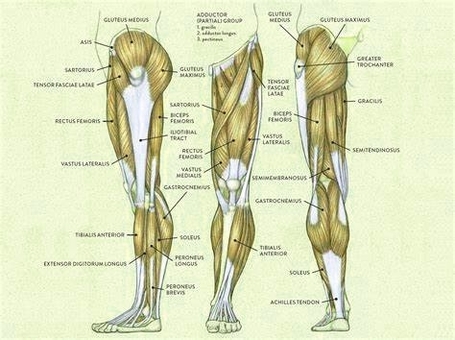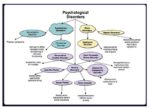Leg Muscles: An Overview
The leg muscles, comprising several strong muscles in the upper and lower leg, play a crucial role in facilitating various movements, supporting body weight, and maintaining body stability.
Upper Leg Muscles
The upper leg muscles include the quadriceps and hamstrings.
1. Quadriceps: This group consists of four muscles in the front of your thigh, which are among the strongest and largest muscles in your body. They work to straighten or extend your leg. The four muscles that make up your quadriceps include:
– Vastus lateralis: The largest of the quadriceps muscles, its located on the outside of the thigh and runs from the top of your femur (thighbone) down to your kneecap (patella).
– Vastus medialis: Shaped like a teardrop, this muscle on the inner part of your thigh runs along your thighbone to your knee.
– Vastus intermedius: Located between the vastus medialis and the vastus lateralis, this is the deepest quadriceps muscle.
– Rectus femoris: Attached to your hip bone, this muscle helps to extend or raise your knee. It can also flex the thigh and hip.
2. Hamstrings: This muscle group is located in the back of your thigh. The key job of these muscles is to bend or flex the knee. The three main muscles in your hamstrings include:
– Biceps femoris: Extending from the lower part of your hip bone down to your shinbone, this double-headed muscle helps to flex your knee and extend your hip.
– Semimembranosus: Running from your pelvis down to your shinbone, this long muscle extends your thigh, flexes your knee, and helps rotate your shinbone.
– Semitendinosus: Located between the other two hamstring muscles, this muscle helps extend your hip and rotate both the thigh and shinbone.
Lower Leg Muscles
The lower leg muscles are located in your calf, behind the tibia (shinbone). Your lower leg muscles include:
1. Gastrocnemius: This large muscle runs from your knee to your ankle. It helps extend your foot, ankle, and knee.
2. Soleus: This muscle runs down the back of your calf. It helps to push you off from the ground when youre walking and also helps stabilize your posture when youre standing.
Function of Leg Muscles
The leg muscles help you move, carry the weight of your body, and support you when you stand. They work together to enable you to walk, run, jump, and flex and point your feet. The lower leg muscles help you lift and lower your foot, extend your toes, stabilize your foot when youre walking or running, and allow you to move your foot from side to side. The upper leg muscles stabilize your body, help with balance, allow you to bend and extend your knees, flex your thigh at your hip joints, and rotate your legs at your hips.
Care and Maintenance
To keep your leg muscles strong, you should warm up before physical activity. By maintaining a healthy weight and focusing on staying healthy overall, you can keep your leg muscles working properly.
Conclusion
The leg muscles, with their intricate structure and diverse functions, are integral to our daily movements and overall physical health. Understanding their anatomy and function can help us appreciate their role and the importance of their care and maintenance.


